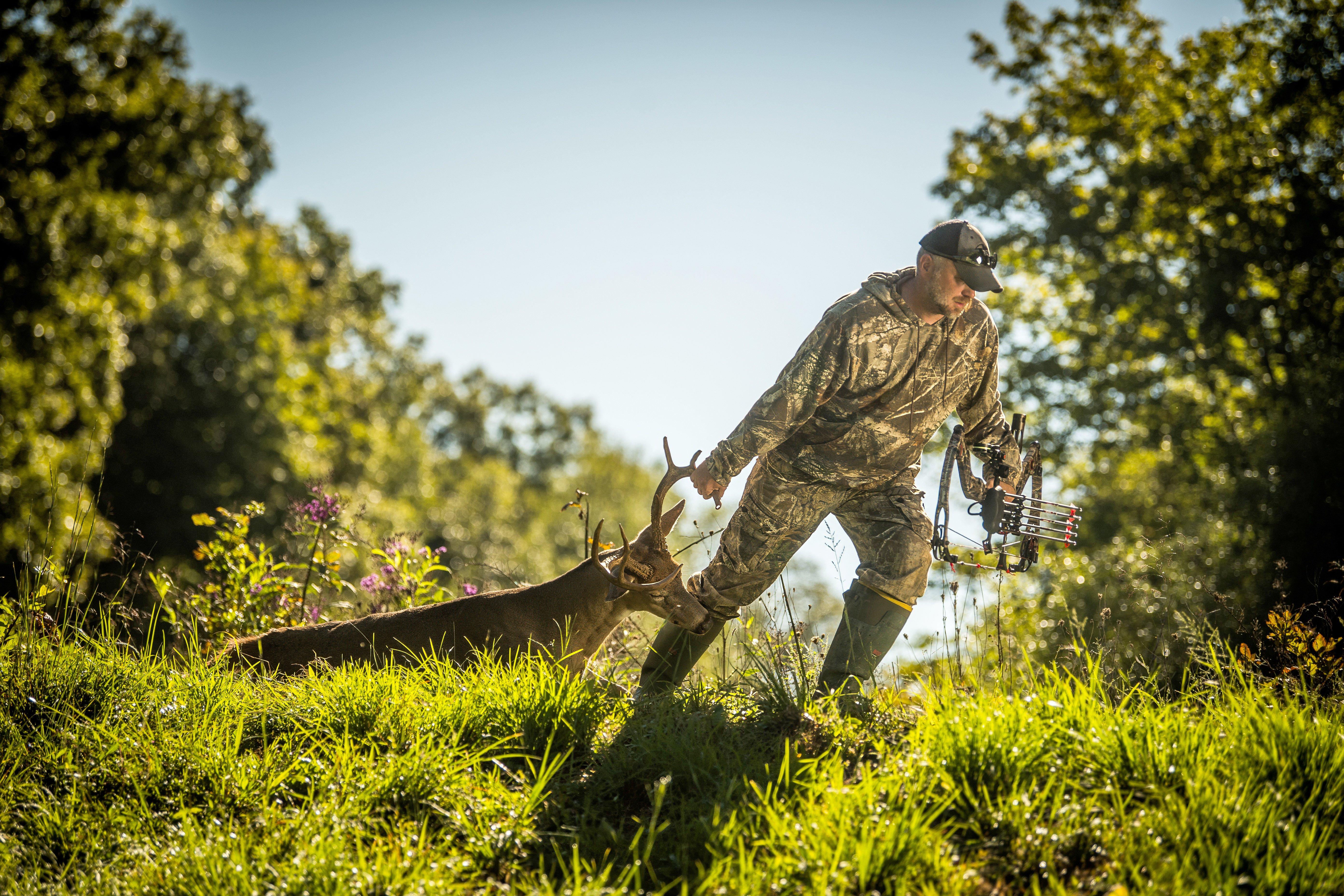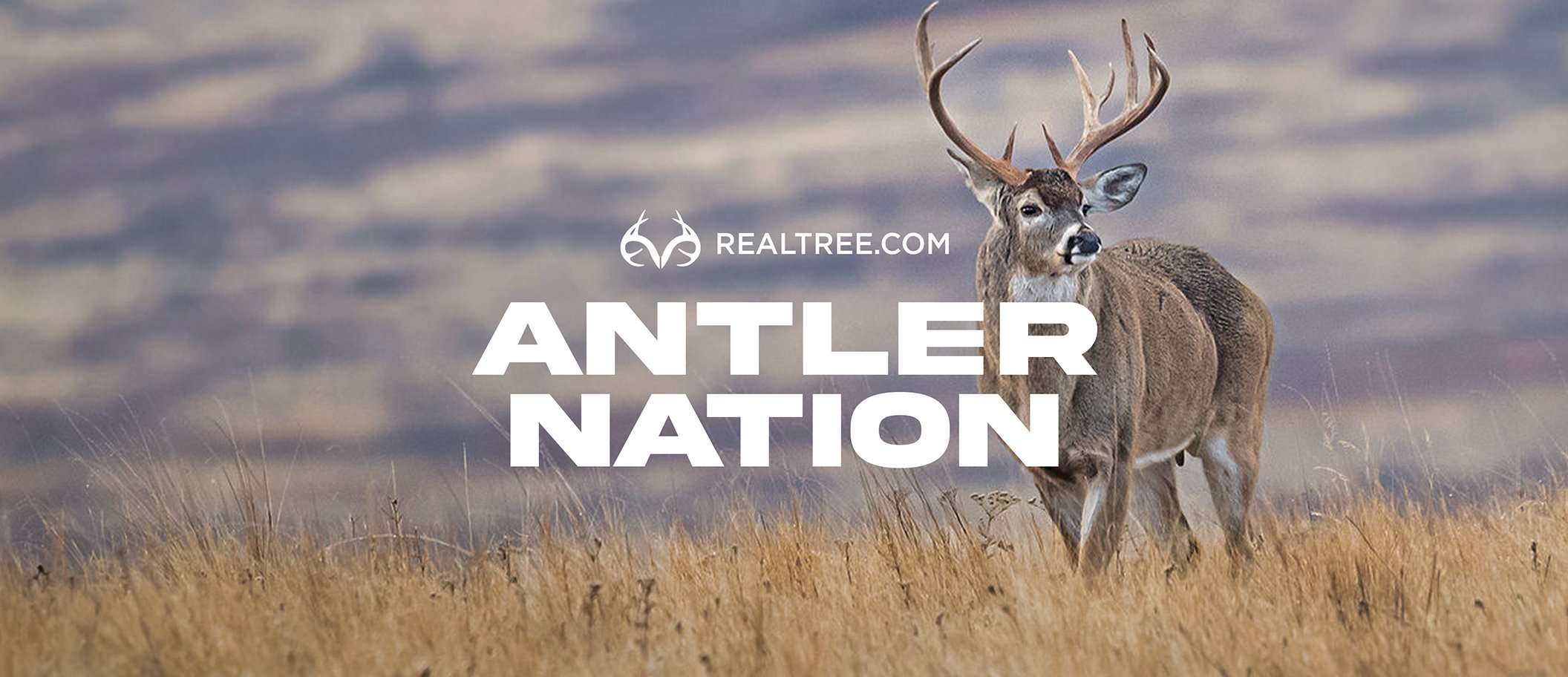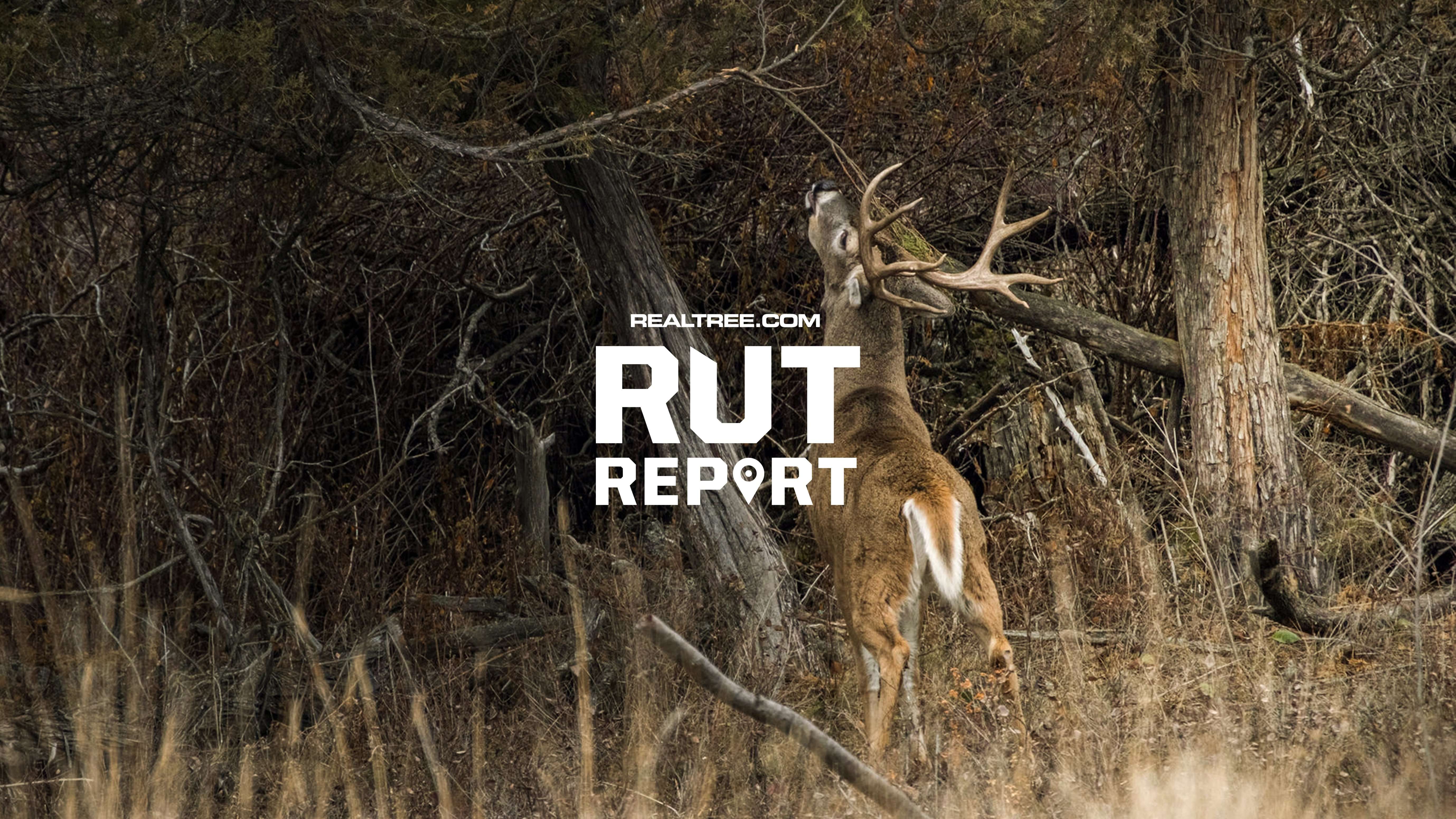Do you consider proper form or conditioning before lugging a buck to your truck? Probably not, but you should

Dragging a deer is strenuous work, so make sure you’re prepared for the task. Photo by Bill Konway.
You shot your deer, recovered it and gutted it. Now the good, hard work begins. Here are some thoughts on staying safe and injury-free on the drag back to your truck.
DRAG SMART
Emergency room physicians note that minor to serious injuries occur each season as lucky hunters drag out their deer. That’s largely because we are accustomed to grabbing an antler (or a doe’s legs) and pulling like hell down through the woods with no thought about stretching or proper dragging form and technique. How many times have you paused to stretch before dragging a deer? Never, I’ll bet, but you should. Take five minutes to do some deep knee bends, hamstring stretches and shoulder circles front and back. Loosen up and you might avoid a pulled muscle or sore back that you’ll have to deal with for weeks.
How many times have you considered proper form and technique for dragging a deer? Again, a big never, I bet. But rather than leaning way forward and stretching out our neck and arms as we tend do when pulling the dead weight of a 120-pound animal, an ergonomics specialist at the Mayo Clinic Health System in Wisconsin notes there is a better and safer way.
“I advocate the power position, or tug-of-war position,” said Katie McCabe, an avid hunter who has dragged her share of deer. “We need to keep our head over our shoulders and always keep our arms close to our bodies. Any time our arms are out away from us, it’s going to be a lot more demanding, and we’re going to have to use smaller muscles to do the work. (But) that power position with a staggered stance allows the bigger, stronger muscles, such as our legs, to do the work.”
McCabe said a good way to save wear and tear on your body is to use a simple DIY deer drag. Pull a length of rope from your pack, and look around for a stout 2-foot-long limb. Tie one end of the rope to the deer and the other end to the stick. Hold the limb close in front of your chest, and push with both hands using the power position.
“This allows pushing the deer as opposed to pulling the deer, which might lead to fatigue and discomfort,” McCabe said.
Check Out Our Latest Camo Pattern: Realtree APX
MONITOR YOUR HEART
You can live with a pulled muscle or sore back, but heart trouble is a life-changing event.
Whether you realize it, deer hunting is stressful on your heart, and there is data to prove it. The American Heart Association recommends a target zone for exercise that elevates your heart to within 50 to 75% of its maximum rate. In a study years ago in Michigan, medical researchers fitted 25 hunters (average age 55) with heart monitors. The heart rates of those who shot at and hit a buck soared as high as 118% of their max rate. The stress on the ticker didn’t stop there. The same study showed that during the aerobic exercise of dragging a deer, a hunter’s heart rate can stay elevated up to 116% of the desirable maximum and keep it there for some time.
The AHA recommends that you walk daily to increase your heart and fitness level before and during the season. When you hunt, drink plenty of water to stay hydrated. Don’t smoke or drink alcohol. Don’t eat a heavy meal before the hunt. Carry your cell, and tell somebody where you’re going and when you plan to be back.
After shooting a buck, sit back and breathe deeply for 20 minutes or so to lower your heart rate. With the pressure off, walk to your deer and take your time dressing it. When you start the drag out, go slow and easy to keep your heart rate at a reasonable level. If you can get a friend to help you drag, do it.
I hate to end on a downer, but this is important. Stop dragging a deer immediately if you experience any warning sign of heart trouble, such as fainting, nausea, chest pressure with lightheadedness, dizziness or shortness of breath, or pain that spreads to your shoulders, arms or neck. The AHA recommends that anyone experiencing chest pain and discomfort for two minutes or more call 911 or go to a hospital immediately. Take care of your heart and body so you can drag out deer for years to come.
Don’t Miss: The Best Days to Deer Hunt in 2024












